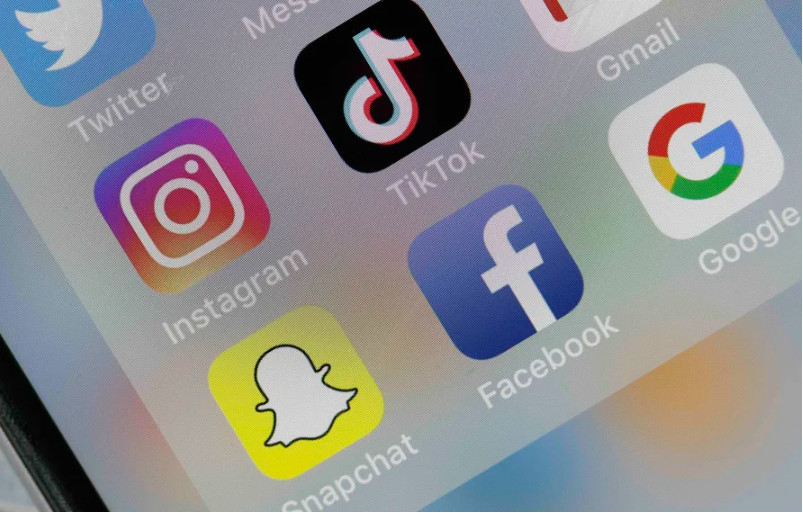
Sciences & Technology
Do devices help us regulate our emotions?

Although digital technology helps us manage emotions, we need better education on its overuse and healthier ways of dealing with challenging feelings
Published 20 June 2023
If you look around any waiting room or queue of people, almost all will be on a mobile phone.
But alleviating boredom is just one way digital devices are being increasingly used to manage emotions including stress and anxiety, and to feel connected to others.

Although emotions are essential to help us navigate the ever-changing, complex and challenging situations we face in everyday life, sometimes people experience emotions they prefer not to have.

Sciences & Technology
Do devices help us regulate our emotions?
When this happens, we may try to change the emotion to one that feels better or is more suited to the current context or goals. For example, people may increase their anger to prepare for competition or suppress joy to focus on work.
People also help each other manage emotions by sharing good news, seeking support, or offering reassurance after an emotional encounter.
This managing and shaping of emotion is called ‘emotion regulation’, and these skills are essential to wellbeing.
But there are limitations to digital emotion regulation, and if it gets out of hand – becoming the main strategy we use – we may need to add in healthier ways of dealing with challenging emotions.
Psychologists have catalogued myriad ways that people seek to regulate their emotions, as diverse as thinking differently about a situation, doing exercise, practising self-compassion, and seeking distraction.

However, recent research shows that people are increasingly turning to digital tools and strategies when they need to manage emotions.
Our studies have found that:

Arts & Culture
A very modern dilemma
A wide variety of digital services including social and messaging apps, games, music and video streaming and even online shopping are used for emotion regulation
Up to half of smartphone use may have the goal of managing emotion
The emotional state of a phone user can predict which app they will use next
The pandemic lockdowns led people to do relatively more digital regulation
Emerging technologies may offer more powerful forms of emotion regulation
Sometimes changing emotions is what a certain technology is designed for, like using a meditation app.
But, often, it’s something that users have learned they can do with a technology that wasn’t explicitly designed for emotion regulation, like playing games to induce feelings of flow or mastery, binge-watching to reduce sadness or to alleviate stress or anxiety the night before a job interview.

People may also share funny stories to increase feelings of joy and social connectedness and listen to a focus playlist to increase productivity.
We think there are several factors driving this shift.

Health & Medicine
Could your smartphone become your therapist?
One is that digitisation makes traditional resources more easily available. For example, people have long-used emotionally impactful media for emotion regulation. In the past, media such as music, video and games could only be accessed at specific times and places.
Now, an enormous selection of powerful, emotion-modulating content is available anywhere.
Likewise, people have always used social interaction to regulate emotion, and now this is available virtually anytime. By connecting people in massive social networks, digital technologies provide more opportunities for people to reach out for social support, to get help reappraising a situation, or to intensify or dissipate emotions by sharing them.
Third, as technology companies compete for our attention, they‘ve become increasingly skilled at designing for user experience. Vendors like Apple, Netflix and Spotify create compelling products by focusing on what people like. This means that, regardless of where they are and what they’re doing, users can increasingly turn to their devices when they want to feel better.
Fourth, devices such as phones bring many resources together, allowing people to create a personalised toolbox of emotion-shaping resources and to rapidly switch between them, according to their situation and how they want to feel.

We believe people and institutions can benefit from a better understanding of the complex relationship between emotion and technology use. Specifically, our research offers a new perspective for those concerned about technology overuse and addiction.

Health & Medicine
Personalising mental health care
Studies have shown that obsessive technology use can represent repeated attempts at regulating negative emotions.
A common response to such overuse is to restrict access to the technology, for example, through limits on screen time. But when someone uses an emotion-regulation strategy too much, or the strategy is ineffective, the solution is not abstinence but to use a better strategy.
This suggests that attempts to mitigate technology overuse should include education about alternative, healthy ways to manage emotion.
There are already excellent resources that teach healthy emotion regulation skills, providing alternatives for someone who wants to spend less time on their device, including going for a walk, reading or meditation.
And emerging evidence suggests that emotion-regulation skills training can be helpful even for individuals with clinically significant levels of depression.
Technologies like social media are by no means universally helpful. They certainly can and do cause problems.

The online world can be emotionally volatile, offering welcome distraction much of the time, but sometimes providing misinformation and triggering anger and hate. But, for most people, digital technologies offer benefits, including convenient ways to deal with the inevitable emotional ups and downs of daily life.

Health & Medicine
More resilient than we thought during lockdown
Researchers in Europe recently proposed that digital skills education should include “digital emotional intelligence”. We agree this is the right way forward.
Digital literacy should include perspectives that help people understand when their technology use serves the function of regulating unwanted emotions, what the benefits and limitations of digital emotion regulation are, and if it gets out of hand, what are healthier ways of dealing with emotion.
We hope our research will inform debates about technology overuse, and help to guide policymakers, technology designers and technology users toward more useful interactions with digital technology in everyday life.
The authors represent the Digital Emotion Regulation team based at the University of Melbourne, Stanford University and University College London: Professor Anna Cox, Associate Professor Jorge Goncalves, Professor James Gross, Professor Vassilis Kostakos, Associate Professor Peter Koval, Dr Zhanna Sarsenbayeva, Professor Wally Smith, Dr Benjamin Tag, Dr Greg Wadley, Dr Sarah Webber and our research students Yaoxi Shi, Kangning Yang and Xanthe Lowe-Brown.
Banner: Getty Images